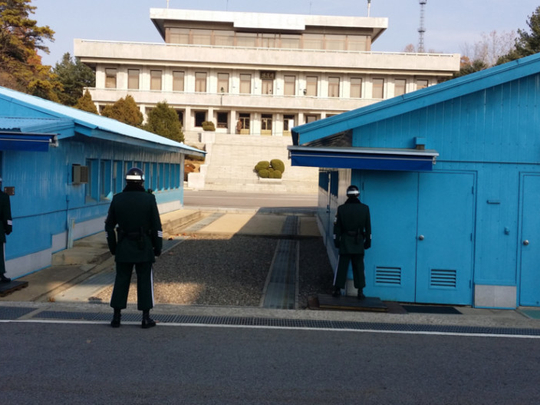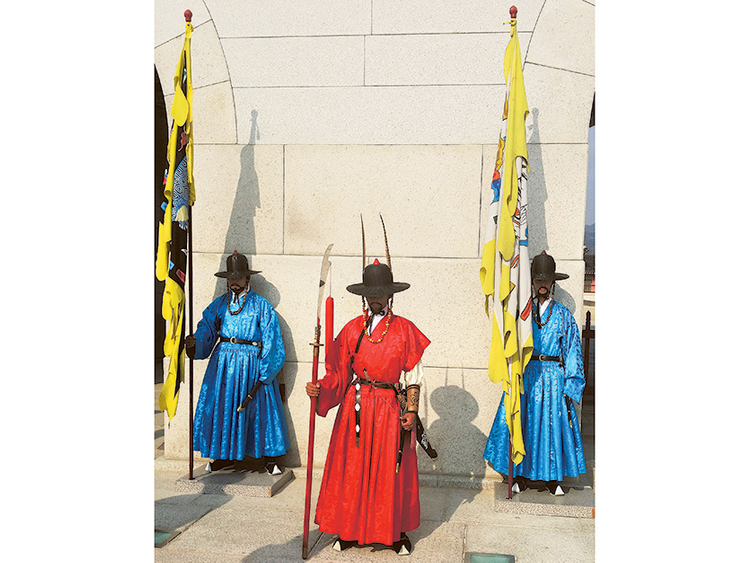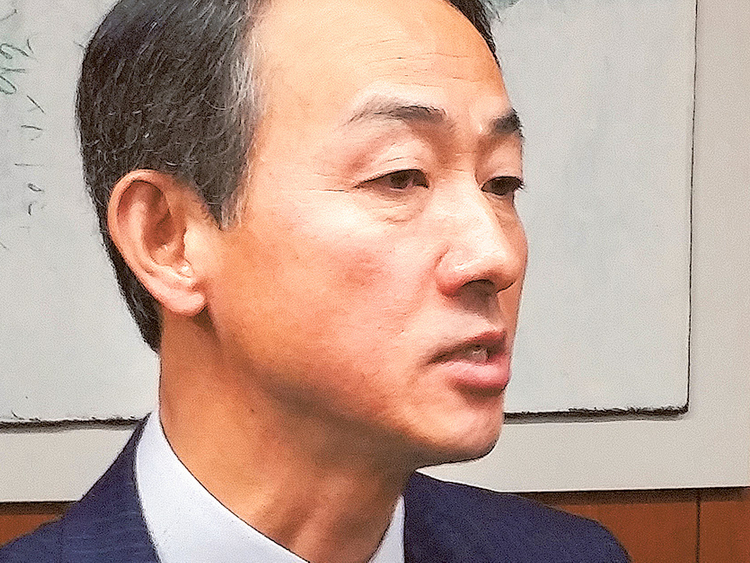
South Korea is forced to live in the expectation that North Korea may collapse at any minute, even though the Chinese are continuing their support for the predatory regime headed by the successive members of the Kim family.
This means that the vigorous and prosperous nation of South Korea has to plan for an almost overwhelming catastrophe in case the North collapses — then the South will need to manage two very different challenges, as a senior Korean Foreign Ministry official explained to Gulf News on a recent visit to Seoul.
First, South Korea will have to take over the administration of 25 million people, many of whom will be in desperate shape. A stunning quarter of the population of North Korea is incarcerated in grim concentration camps where they cater to the needs of the 20 per cent of North Koreans in the comfortable elite around their leader, while the remaining 55 per cent are required to eke out their lives without creating any trouble for the authorities.
Second, the South will face astronomical costs of full reunification, which will need up to an initial $2 trillion (Dh6.34 trillion) investment in the North to bring it up to the same level of infrastructure and education as the South.
Despite frequent comparisons, the Korean challenge is much greater than the successful German reunification in 1989. In Korea’s case, 50 million South Koreans will need to incorporate 25 million North Koreans who come from a country that has a GDP which is a dramatic 46 times smaller than the south, compared to 63 million West Germans absorbing 16 million East Germans whose GDP was only 10 times smaller than the West.
In addition, the two halves had no legacy of fighting each other because Germany was forcibly split by the victors of the Second World War, whereas the two Koreas fought the three-year Korean War when North Korea invaded the South in 1950. The vicious fighting and destruction has left a lasting hate between the combatants, which will make reconciliation that much harder.
In addition, prior to the Berlin Wall coming down, the East Germans were able to listen to West German TV and radio and knew what to expect from the West, whereas the North Korean population has been kept in total ignorance of the South, and have been brainwashed for 70 years with propaganda that the South is a foul enemy which has collaborated with the Japanese and Americans for decades.
Reunification bonanza
The fearful costs of reunification have combined with an economic downturn in South Korea to start a movement among young South Koreans that the North should simply be ignored. They argue that the Kim regime has gone on so long that the South should avoid crippling itself with the overwhelming costs of reunification.
This is anathema to the new South Korean government of President Park Geun-Hye, which is succeeding in both improving Korea’s all-important relations with China and also sees reunification with the North as both desirable and inevitable in time.
To counter the scepticism of young Koreans, Park talks hopefully of a Reunification Bonanza, which emphasises the future economic gains to be had from rejoining the two halves of Korea, such as cheaper labour from the North helping to maintain Korean competitiveness, as well as the united Korea getting a direct land route to the rest of Asia which would offer much improved and cheaper trade, as well as oil pipelines running directly into Russia with its large gas supplies.
“We do not know if the regime will survive,” said Kwon Yong-woo, Director General in the Korean Peninsula Peace Regime Bureau of the Korean Ministry of Foreign Affairs. “They have a dilapidated, planned economy, dominated by a series of vanity projects with no investment in infrastructure, although recent harvests have been alright so for now they can eat”
Zigzag
Nonetheless, the South Koreans are trying hard to build relations with their counterparts in the north, although it is hard to see if there is any structure to this process as the ordered and logical South is trying to work with a whimsical and highly personal North which has little need to talk with the South while Chinese support continues.
Kwon described to a group of journalists visiting the Foreign Ministry in Seoul the difficulties of trying to deal with the zigzag history of the North’s attitude to the South in recent years.
“Since the death of Kim Jong-il in 2011, the North has veered wildly from hard to soft. First, immediately after Kim Jong-un took over he purged and then executed his powerful uncle Jang Sung-teak which created uncertainty over North Korea’s relationship with China because Jang had always been a proponent of closer relations.
“Then in early 2014 Kim Jong-un said he wanted closer relations and we had the first north-south contacts for some time, and an agreement that family members from both sides of the border could meet, and several other mutual agreements.
“But next things got a lot worse with verbal attacks following the South Korean–American joint military exercises and President Park’s speech at the United Nations. The North responded by launching missiles, rockets and eight ballistic missiles.
“Then in October 2014 the North made a dramatic volte face and sent the three most senior people after Kim in its leadership to attend the Asian Games closing ceremony, and in a side meeting agreed to resume bilateral meetings. But since then nothing has emerged.”
Kwon summed up that “we remain open to dialogue and we want an environment conducive to dialogue” making clear that South Korea wants to keep the door open to potential discussions even when none are forthcoming from the North.
Recently South Korea has taken some comfort from a shift in Chinese policy that seems to have moved in their favour. “We see the China-North Korean relationship cooling due to North Korean provocation and their insistence on developing nuclear weapons. This goes against what China is looking for: peace and stability, a de-nuclearised Korean peninsula and resolution of all disputes through dialogue.”
“Following President Park coming to office, South Korea has worked much better with China, and both China and South Korea have stressed the need for peaceful and gradual moves to improve the situation, agreeing that North Korea should be seen as an asset for the future rather than a problem to be dealt with,” Kwon told Gulf News.
DMZ and the front line
There are substantial barriers to overcome, and none more challenging than the last remaining active front line left from the Cold War. The Korean War was launched in 1950 when the United States took advantage of Joseph Stalin’s USSR’s boycotting the United Nations to get approval to launch an all-out war backed by many Western allies to repel North Korea’s invasion of the South.
General Douglas MacArthur was military governor of Japan after the Second World War, and was hastily moved to take command in Korea. He drove the North back and proceeded to invade the North and drive right up to the Chinese border against President Truman’s wishes, who then had to remove him from command to stop him invading China.
The eventual ceasefire line in this bitter conflict remains in effect to this day and divides the Korean Peninsula in half. The Korean and US soldiers in Camp Boniface on the Demilitarised Zone, DMZ, believe in their mission with wholehearted spirit. “We confront the enemy every hour,” shouted the alert Korean sergeant who showed the visiting journalists to the front line. “Our mission is Freedom and Victory in the Korean Peninsula!”
Camp Boniface is where tense meetings between the two sides happen under elaborate armistice protocols than have been in place for 70 years, and illustrate the vast task required to break through and establish any kind of normal contact.














